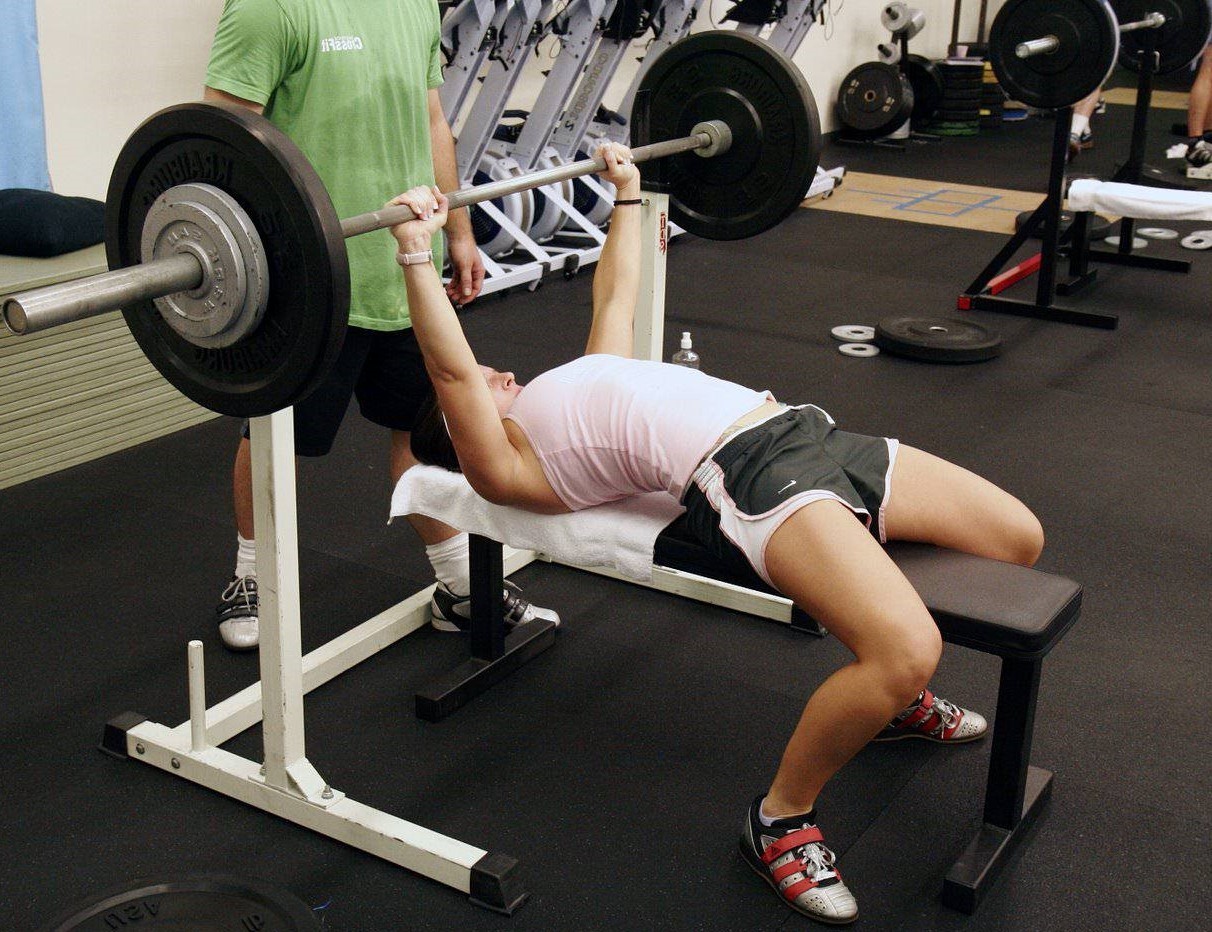Is it your first month of training? If so, welcome. No matter who you are, you’ve decided you want to lift to get stronger, or bigger, or more confident. There are plenty of reasons to pump the iron, but as long as you’re doing it because you actually enjoy it – or at least enjoy the idea of it – then you’re on the right track.
I’m going to cut straight to the chase, because that’s what you need. The fitness industry is an industry, and that means it’s going to do its darndest to sell you a lot of stuff. Someday, you might need some of that stuff. You won’t need it today. Or tomorrow. Or in a month.
What you need right now is this: a single kernel of truth. If you’re a novice lifter, you just have to lift. That’s all there is to it. Lifting can get very complicated very fast.
In time, you’ll learn all about accessories, banded training, periodization, programming, working up to one-rep maxes, adapting a conjugate training method or linear periodization – but for the first, say, six months of training, you really don’t need to know about any of that. All you need is to train and eat.
Just Do Whatever in Your First Month
A lot of beginners stress out over what program they should train with first. They stress about doing cardio or lifting or both. But if both, then in what order, or together? Questions lead to questions. What’s the ideal weight for my height? How much should I squat? Should I do calisthenics or continue lifting? Do I need prehab? Rehab? Knee straps? Belts? What’s a scapula? How much whey should I shovel into my mouth every morning? Or should I only take protein shakes at night? Or right after a workout? Or before?
I could go on and on and on – and in a way, I actually do. The purpose of this website is to help intermediate lifters get the answers they need to these questions, insofar as they’re actually relevant to their goals and gains. But for you, you strapping young lad or lass, all of this information doesn’t matter.
Neither does your first program. Starting Strength? Stronglifts 5×5? Ivysaur’s modified 4×8? Do whatever. Close your eyes and pick one, because for your first month – and your first few months, actually – the exact program that you end up picking doesn’t matter as long as it involves you lifting regularly and putting weight on the bar week after week. What does, matter, however, is this:
Consistency is Key (As Always)
I don’t care if it’s raining. I don’t care if you’re tired. I really, really don’t care if you’re sore. Unless you’re actually hurt or unless it’s a holiday and the gym is closed, you must stick to your program. Your first month of training is useless if you end up missing a fifth of your training days.
Most early programs only have you train thrice a week anyway, so make use of that and try to hit those three days every single week, without fail. Be flexible, make room, and work around unexpected issues as they arise. Can’t train at your usual time? Train later in the day, or earlier if you know you’ll be busy in the afternoon. Can’t train on Friday? Go on Saturday.
Training is 20% knowledge, and 80% pure discipline. If you can’t go on days when you don’t want to go, you won’t get anywhere. If you’re training for your mental health – which is a very good goal – then it’s understandable that you’re going to struggle with going at times. That’s fine. But that doesn’t mean you shouldn’t go.
It’s Tough, But Stick To It
Something being hard is no reason not to do it, and there are ways to make it easier. For example: get a friend to go with you. Nothing beats sitting at your desk and knowing you need to get to training, only for your friend to hit you up and remind you to get off your ass right now. It also makes the trip there and back less of a bore, which is a big deal.
The commute to and from the gym is a problem for many, so get a pal to go with you. But go as per your program, and don’t miss days.
If you do, then make up for it. Go on another day or extend your definition of a month. Get out of the rut of hitting the gym for a week or two and then dropping out. Gains come from consistency, and nothing else.
Diet and Recovery Matter a Lot
You won’t make much progress if you’re training hard and doing absolutely nothing else outside of the gym. If you’re skinny and you want to get strong, you have to eat a crapton of more food. Start with an early low-volume high-calorie meal, like a rich cereal or energy bar, and hit the gym. Get a massive lunch, and a protein-heavy dinner.
Run your stats and meals through Cronometer for a few days to get an idea of what you’re consuming, and how much extra you need. If you weigh too much, then do the same – but in reverse. Maintain your protein intake, but decrease your calorie intake, and keep training. If you enjoy lifting weights, keep doing it, but consider doing a little something else on the days you aren’t in the gym.
Don’t worry about protein powders, creatine, supplements, shakes, caffeine powder, pre-workouts and all that other stuff. As long as you’re eating enough and sticking to the program, your diet is fine.
The next thing most beginners in their first month mess up is sleep. Get at least six hours of sleep per day, and eight hours if you can. A lot of novice lifters tend to be students or young people grinding through a terrible job, so getting eight hours of sleep might seem luxurious. But if it’s possible, then do it. You’ll have to cut into your gaming time, your reading time, or your YouTube time, but get it done.
Prioritize Quality Over Quantity (On the Bar)
One of the bigger mistakes novice lifters make is accelerating too quickly. Linear periodization programs are designed to let you backtrack and self-correct, but you have to understand how or why to backtrack or self-correct. If you’re meant to hit a perfect 5×5 but barely grind out the last rep on the last set, I’d highly suggest you don’t actually add that five pounds to your lift.
Give it another week. Quality reps matter far more than how much weight you have on the bar, and if you care at all about getting strong, you’ll learn early on to stop chasing personal records and to stop ego lifting, and to start training intelligently, focusing on perfect or near-perfect form.
That means taking frequent video footage. But don’t just take a video and watch it on repeat right after each set. Take your videos set after set, and then watch them at home. Internalize your mistakes, keep them in mind for the next session, and use self-made cues to adjust your form. Use resources like Reddit.com to ask for form checks.
Document Everything (Not Just in the First Month)
Speaking of form checks, document everything. Write it down physically or keep notes on your phone, but be sure to follow your progress on every training session. This doesn’t actually matter much for the sake of training, but it does help you build a habit that can become very, very important in your second year of lifting.
After your first months, as you become a stronger lifter, consider different programs. This usually happens between 8-12 months after starting – it varies from individual to individual. As you try out different training programs, you get different results and progress differently.
A detailed and organized documentation process lets you keep an eye on how your lifts are progressing, allowing you to go back and check what you did differently back when your bench stopped plateauing, or how you managed to get out of a squat plateau. It’s also helpful to look back on how far you’ve come, which can help you realize how all that time spent training has crystalized itself into progress.
Don’t Program Hop in Your First Months
This is critical if you’re a new lifter. If this is your first month, your challenge is simple: pick one program that a lot of people enjoy and stick to it. I don’t care if you read 25 testimonials that all say it actually sucks in this one specific way – if you’ve just started, it really doesn’t matter what you do as long as you start doing it and do it consistently.
Easy-to-remember programs like Stronglifts 5×5 might not be the most biologically perfect way to start training, but unless you have the resources and connections to have a coach tailor-make the perfect program for you – which really isn’t worth it, and I don’t recommend hiring a personal trainer if you’re a beginner – something like Stronglifts 5×5 is exactly what you need.
I personally used Ivysaur’s 4×4/4×8, and eventually switched to nSun’s LP, but it doesn’t matter what you do as long as you stick to it. Stick to it. Not for a week, not for a month, not for two or three or four months, but until you stop progressing.
Understand “Fuckarounditis” – And Fight It Ardently
Fuckarounditis was coined by Martin Berkhan, the creator of the Leangains Method and the 16/8 intermittent fasting program. It’s something he uses to describe a dangerous condition characterized by a lack of progress despite lots of time spent training.
 The cause of said condition is time wasted doing useless exercises or hopping from program to program when a trainee should just be hitting the iron on a consistent basis.
The cause of said condition is time wasted doing useless exercises or hopping from program to program when a trainee should just be hitting the iron on a consistent basis.
Training isn’t glamorous, awesome, or exciting – most of the time it’s boring, and then you have the days where you’re making amazing progress, and everything feels light and you’re getting a great pump in the gym mirror.
As powerlifters, we don’t chase the pump – but we do chase PRs. Before you can start doing that, though, you have to establish a base of strength. That base takes around one year. That means 12 months of training, week after week.
Find a starting program, stick to it until it doesn’t work, and then look around for something that does work. After your first month, as you lift more and more, you’ll figure out ways to improve your lifts, address weaknesses and sticking points, and become a better lifter. But don’t succumb to fuckarounditis – don’t start doing a bunch of shit, instead of doing what you should be doing.




